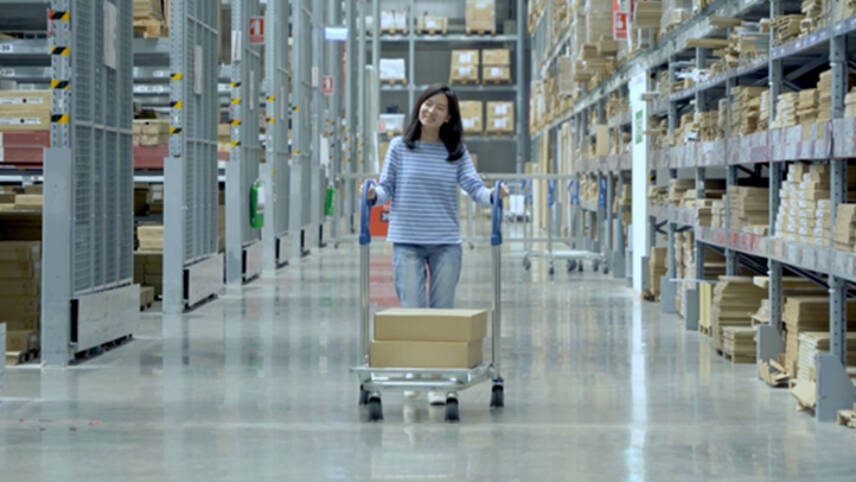This premium content is exclusive to edie Members.
To find out more about edie Membership, please click below.
If you are an existing member, login here

At a glance
Who: Ingka Group
What: Procurement of green steel for IKEA warehouse racking
Where: Produced at H2 Green Steel’s plant in Boden, Sweden, and implemented in IKEA stores globally
Why: To significantly reduce carbon emissions associated with steel production
When: Agreement effective from 2026; production starts in late 2025; implementation begins in 2026
The Challenge
Steel production is a major contributor to global greenhouse gas (GHG) emissions (8%) and Europe’s industrial CO2 emissions (25%). Ingka Group relies heavily on steel for warehouse racking, making it a significant carbon-intensive component of its operations.
The Solution
Ingka Group’s partnership with H2 Green Steel aims to replace half of the warehouse racking with green steel, a sustainable alternative, aligning with IKEA’s goal of becoming climate-positive by 2030.
How the Project Works
Ingka Group will transition from traditional steel to green steel, produced at H2 Green Steel’s plant in northern Sweden. Green steel is manufactured using a direct reduction process powered by green hydrogen, replacing traditional heavy polluting blast furnaces which use coal and coke, eliminating carbon emissions and producing clean steam as a byproduct.
The electricity required for electrolysis and operating the H2 plant will come from nearby clean energy sources, including hydropower from the Lule River, as well as regional wind projects.
The steel will be produced using a direct reduction reactor (DR) in the place of a blast furnace, producing sponge iron and water. The DR reactor refines iron ore to direct-reduced iron (DRI). This is done by exposing iron ore to hydrogen, which reacts with the oxygen in the ore to form steam as a residual.
The majority of DRI is transported in the hot state inside the plant to the Electric Arc Furnace, while the rest is briquetted into hot briquetted iron, for storage and later use. The liquid steel is turned into solid products in an integrated process called “continuous casting and rolling”.
After this process, some hot rolled coils are transferred to a fully electrified downstream finishing line. The steel is then adapted based on customer requirements. It can be treated using cold rolling to change thickness, annealing to create the right mechanical properties, and hot dip galvanisation to reach the desired corrosion resistance. The finished steel is then packaged to be shipped to customers.
The Results
By adopting green steel for warehouse racking, Ingka Group anticipates a reduction of up to 95% in carbon emissions in the warehouse racking category.
H2 Green Steel hopes the factory will produce five million tonnes of steel by 2030.
Business Benefits
This initiative offers various benefits to Ingka Group, including reduced carbon footprint, enhanced sustainability, and alignment with IKEA’s climate-positive commitment.
Investment/savings
While specific financial return on investment data is unavailable, the company anticipates the initiative to result in a considerable decrease in Ingka Group’s operational emissions.
Industry context
The steel production industry is known for its high emissions, with approximately 2 billion tonnes of steel manufactured annually contributing to approximately 8% of the world’s CO2 emissions, as reported by the IEA.
However, the existing production methods do not align with the goals and commitments of the Paris Agreement. To stay on course with the trajectory towards net-zero emissions by 2050, process emissions in this sector need to decrease by a minimum of 30% by 2030.
© Faversham House Ltd 2024 edie news articles may be copied or forwarded for individual use only. No other reproduction or distribution is permitted without prior written consent.

